Speed wobbles are experienced by all riders at some point when riding their Onewheel. The wobbling (or oscillation) is not unique to Onewheel riding and is frequently experienced in cycling and skating sports. This phenomenon occurs when there is an unbalance on a load being carried and the rider experiences a rocking / tremor-like feel. When riding, terrain, speed, tire, and load factors all may be contributory factors that can cause a speed wobble. Primarily however, the wobbling on a Onewheel is due to an uneven load balance.
To fix Onewheel wobbles, both feet need to be repositioned by inching them to a position that properly provides a center of gravity and diagonal tension, made from your lead and trailing foot. The Onewheel’s controller is designed to only balance the board from front-to-back having no control of the side-to-side movement. You should immediately slow down if you cannot stabilize the wobbling.
Why Wobbling Occurs on the Onewheel
Whether it’s a motorcycle, unicycle, skateboard, or Onewheel, any lateral movement with an uneven load can result in a wobble. If you don’t work on correcting the wobbles, you may find yourself in a situation where you lose control and get injured. Common causes of Onewheel wobbles are uneven weight distribution, foot fatigue, and/or lack of diagonal tension (discussed towards the end of the post).

Now, wheeled board sports, motorcycles, and the like have different variables, such as loose trucks, weight balance on the handlebars and tire balancing. However, all can result in wheel wobbling, especially at higher speeds. The good news with a Onewheel is that the axle is bolted to the board and affixed to one large tire, meaning that there is nothing between the rider and the pavement that could add additional factors to wobbling.
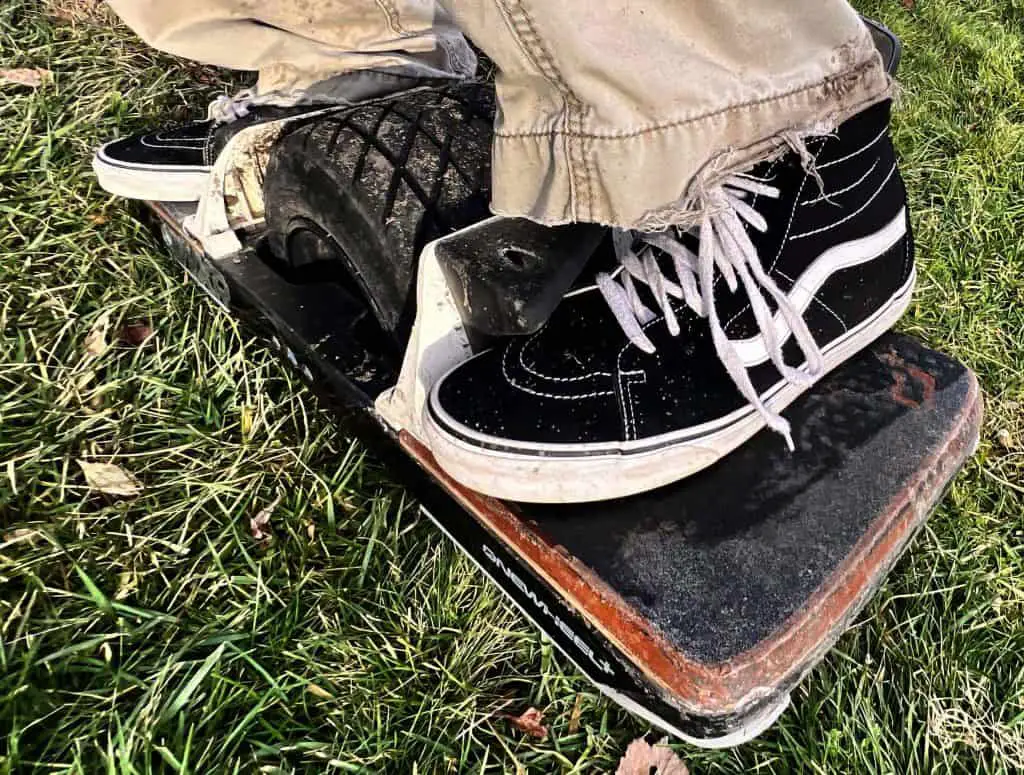
Onewheel wobbles are especially common with newer riders. You will surprisingly experience less wobbling when trail riding, primarily due to the terrain absorbing some of the imbalance on the Onewheel. Wobbling can also occur when foot fatigue sets in.
Foot fatigue, along with foot placement, is typically the primary culprit for wobbling Onewheels. You will find that the more you ride, the less wobbling will occur.
Below are all aspects to consider as to why you may experience some wobbling and what you can do to remedy it. Likely though, 99% of the time it comes down to foot placement and weight distribution as you ride).
Foot, Calf and Quad Muscle Fatigue Can Lead to Wobbles
Wobbling can also be caused by weak leg and foot muscles. These muscles need to be firm enough on the board so that they can allocate and distribute weight evenly as you ride. Our bodies have an intuitive sense of finding equilibrium, and you will often feel your body naturally wanting to balance the board out. However, if the muscles are too weak or tired, it can become harder to do so.
Many experienced Onewheel riders have logged thousands of miles on their Onewheels, which involves hours of training specific muscle groups to master the Onewheel. Notably, the calf and quadriceps are the main muscles that need exercise, and this simply takes time. Newer riders will inevitably experience foot and calf muscle fatigue. Bending your knees while riding also engages your quads, which can also become fatigued. Therefore, it is important to take breaks and relax your muscles. Taking a break also allows you to check on battery levels, so it is a good idea to do this naturally on a trail ride.
Remember that all riders have experienced sore leg muscles at some point. The muscle fatigue will pass with time. Frequent rides will help train the muscle groups. Another technique to overcome fatigue is carving. Carving allows your muscles to take mini breaks along the ride, rather than constantly engaging the same muscle group and leading to quick muscle cramping.”
Type of Board and Tire Profile
Wobbles may occur more frequently on a Pint X (Pint) than on a GT, GT S-Series or XR, as these tires have a more rounded profile. While the GT is the same width as the XR tire, it is also more rounded at the center so balancing (at first) may be slightly more challenging than on an XR.
With a more rounded tire, it can be more challenging to find the load balance while riding. You already bought the Onewheel, rather than change the tire, consider lowering Tire PSI.

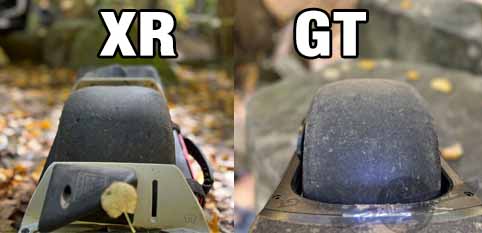
Currently the most stable tire available is the 7″ S-Line tire that is available on the Onewheel GTS (GT S-Series).
Recommendation: For GT Onewheel riders, Future Motion has released a Performance Tire line. On their treaded tire option, they make a 7″ wide tire. If you are seeking more stability, an extra half inch tire base will help.
Lower Tire Pressure
Tire Pressure (measured in PSI / pressure per square inch) is going to play a huge role in how your tire balances your weight. The recommended tire PSI by Future Motion is 20 PSI. Think of your tire fully or over-inflated. Now picture riding on a completely deflated tire. When the tire is deflated, the surface area is larger. Clearly you would not ride on a deflated tire however most riders use a PSI that is (generally) 10% of their body weight (e.g. rider weighs 180 lbs, their recommended PSI is 18).
A slightly deflated tire tends to provide good traction. Too little air can cause a tire to wear pre-maturely but reducing a little tire pressure is completely fine. Carrying a tire pressure gauge and a pump in your car ensures for a good ride every time.
Testing Your Balance
While repositioning your feet, you can often fix the speed wobbles, before you hit the trails, check your stance when mounting the Onewheel. In a back and forth lateral direction, Can you rock in both directions comfortably without losing control? If you are able to rock 3 feet in each direction then your foot positioning is fine. The center of gravity for Onewheel riding is in our torso/hip area. If you find yourself tipped off the board and cannot rock back and forth 10 times or so without ease then you need to reposition your feet and weight so that this exercise can be completed.
Newer riders tend to stand very straight. Not only will this cause for more nose dives, this puts all the work into our calf muscles. Keeping our knees bent on a ride allows for the quads to be engaged. This also allows for our body to become a human shock-absorber. With the knees bent, the uneven terrain will cause the board to rock but that energy gets absorbed into the stance. Too rigid of a stance will transfer the energy into your hip area causing you to lose balance easier.
Finding Balance – Diagonal Foot Placement and Cross Tension.
With trail riding, the balance is going to shift constantly. When riding your Onewheel, our arms provide as balancing tools in keeping our center of gravity relative to the momentum we have. Our arms and feet positioning will allow us to regain control over terrain that offsets our center of gravity.
Newer riders tend to want to place their feet on the ends of the board for stability however this makes it harder to find a balance. Your feet will have to travel farther to find a balance. Instead place them closer to the center. Once you have completed a few rides where you haven’t had a wobble, outline your feet on the footpads with chalk so that you can easily find where the comfort spot is on your Onewheel.
Tip: To remove the wobbles, position your lead foot diagonally so that the toe is pointed towards the corner of the board. Positioning your foot diagonally opposed to perpendicularly allows for more control in the left-to-right balancing of the Onewheel. This gives you diagonal tension which will soften those wobbles.
Remember, the Onewheel controller only balances the board from front-to-back. It does not have abilities to balance side-to-side. With a diagonal foot placement, it adds a diagonal / cross tension over the wheel which should improve the ride.
(If it feels comfortable and more symmetrical, position both feet diagonally).
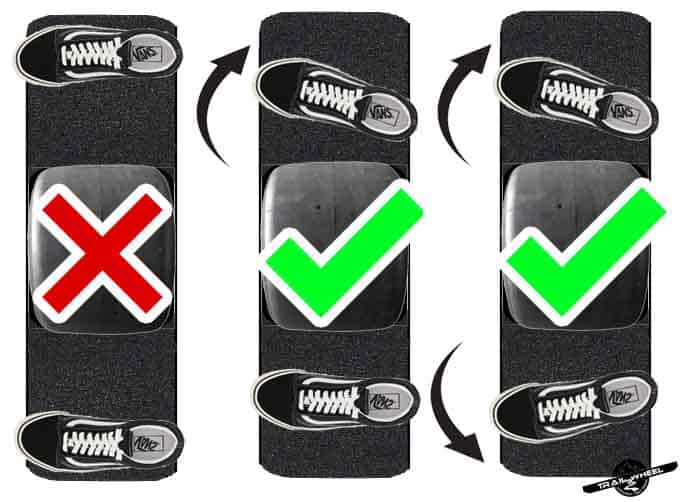
Lowering the Board’s Height
Generally speaking, the higher the board deck is, the easier it is for wobbling to occur at moderate to fast speeds. Likely if you are reading this post, you are riding a stock Onewheel. That being said, even at the standard height the board can wobble with improper weight distribution. If you have not found that perfect zone to satisfy the wobbles, try a lowering kit or WTF rails. The Float Life sells “Half and Half” axle blocks which allow for lifting or lowering the Onewheel. In this instance, lowering the board will make the Onewheel feel far more secure however you trade a little nose clearance for that security.
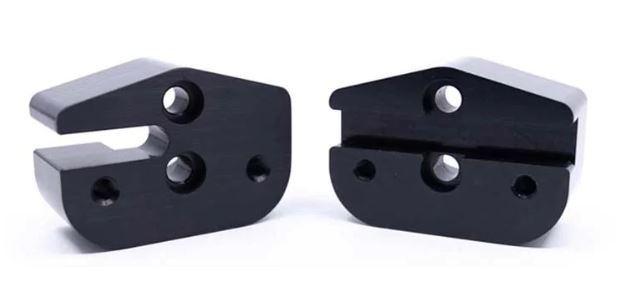
You can also try aftermarket rails. Notably are Homebrew WTF’s, Lighting or Mustache rails. See the list of all available aftermarket Onewheel rails to make the best decision.
This really is a last case scenario. You should not need to resort to this solution. Riders that resort to lowering really just love the comfort however they have managed to over come general foot fatigue and speed wobbles. Don’t use this as a crutch. Future Motion has considered the stock height sufficient for most riders.
Onewheel Wobbling Fix Checklist
- Check tire pressure: Tire pressure if over inflated may feel like the tire is too rounded. Too low and the sidewall wont be supported enough. Check our tire PSI calculator for Onewheel riding.
- Try moving feet closer to center of the Onewheel. Angle your feet. A diagonal foot will allow for better a better way to distribute your weight to the nose if the board begins to wobble.
- Diagonal tension. Weight from your rear heel to the lead toe or weight from your rear toe to your lead foot. Always try to maintain some diagonal tension on the board. (This will eventually feel intuitive).
- Lower your riding stance. Bend your knees and maintain your weight so that its directly over the wheel. Do not lean forward to accelerate, just shift the weight in your hips.
- Take a break. Slowdown and stretch the calves out.
Conclusion
Newer riders will inevitably experience some wobbling on a Onewheel due to weak or untrained leg muscles, especially among newer riders, but it is important to know that this is normal and it takes time to stop wobbling and regain control. Remember to relax your muscles and maintain a bent-leg stance while carving frequently to reduce muscle strain. It is also helpful to find a proper balance by positioning one or both feet diagonally, which can help stabilize the board. Choose what feels best for you and use your arms to maintain balance throughout the ride. If the wobbles do not subside, riding slowly and taking breaks to rest your feet may be helpful. Once you have gained more experience, outlining your feet with chalk on the footpads can help you find the perfect position for future rides.
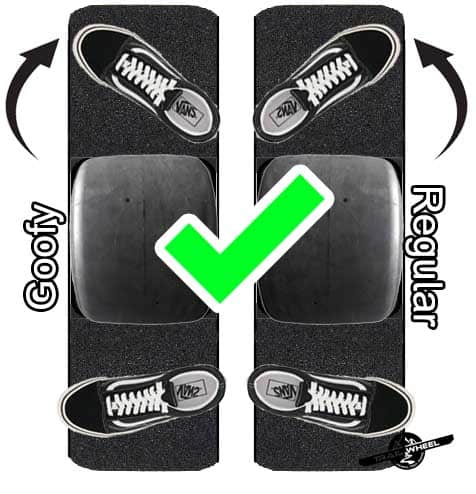
In almost all board sports, there is some degree of speed wobbles that you cannot control. These are the ones where you are going far too fast for the board you are on. Generally, however, you will overcome speed wobbles on your Onewheel if you are within the board’s speed limitations. Having leg muscles trained for riding is the best way to maintain control of the Onewheel. The muscles just need time to build up. Finding the perfect balance will happen quicker and sooner over time. Start out riding slow, don’t forget the safety gear, and start working those legs. Happy trail riding!
F.A.Q.’s
Very unlikely. The one wheel of the board is affixed to the rails with 4 1/4″ hex bolts. So long as you have not loosened them to service the tire, The alignment should be fine. If the Onewheel feels like it is out of alignment, check the bolts. More likely there is a bulge in your tire from over inflating or wear. Its good practice to not exceed 22PSI. If your board wobbles, focus on foot placement.
If your Onewheel shakes when you ride it, please refer to the above post on best practices to remediate the wobbling wheel.
Your ride pattern and habits will reflect on the tire over 800 miles or so. Carving regularly (traversing from toe weight to heel weight) will help wear the tire out more evenly and last longer.
Hot asphalt, under inflated tires and uneven riding are the causes for premature tire wear. Depending on your area, hot asphalt may be unavoidable. Under inflated tires are preferred for trails however over time this can wear out the side wall. If you notice wear on the side wall or on one. side of the tire, inflate to 15-20PSI and practice more carving in your commuting miles.
yes, the Hooiser Whisper or even the stock tires handle well on trails. For more traction, treaded tires are recommended.
Yes there are videos you can see online of riders exceeding speeds on traditional four-wheeled boards and also getting speed wobbles.
Not all but most aftermarket rails lower the rider’s center of gravity. Rails that are most notable in doing this is Homebrew WTF’s, Lightning Rails, Mustache Rails and Tech Rails. Lowering the center of gravity will minimize wobbles.
Surprisingly, if you are experiencing wobbles, you may find that off-road trails will produce less wobble feeling. If you are new to Onewheel, find out why the Onewheel is the best off-oad PEV and know that wobbles are far less likely on trails. Always remember that leg muscle strength and training always helps.

4 thoughts on “Onewheel Wobbles & Feels Unstable [How-to Fix the Wobbling]”